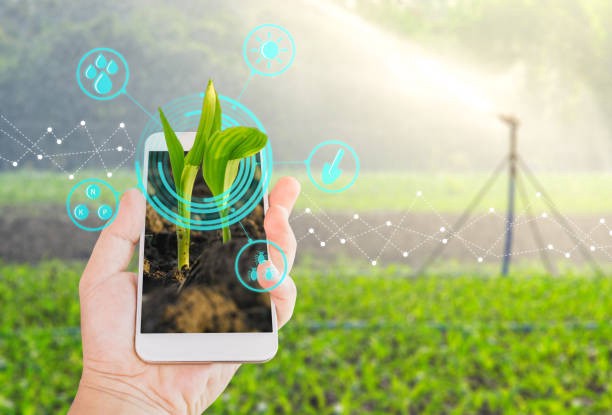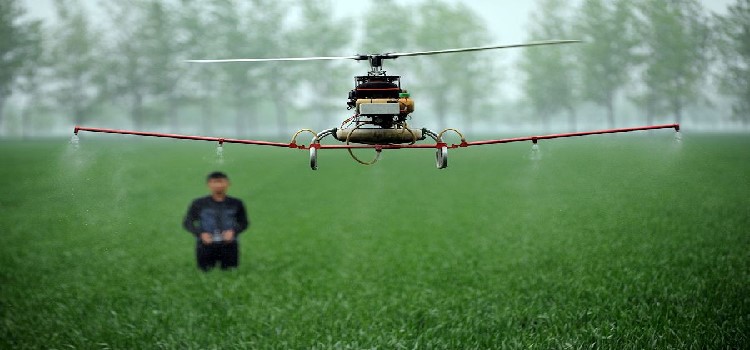Things You Should Know About Smart Agriculture
29-Sep-2020

Agriculture is the back bone of any and every economy. Strengthening the agriculture sector strengthens numerous other industries such logistics, wastewater, and power. Agriculture or the growing of crops is heavily dependent on the climate, soil, and water. Frequent draughts, floods, and other natural calamities threaten the productivity of the soil.
Soil erosion, over-cultivation, over or under watering of the soil, over use of fertilizers threaten the soil’s yield, thus reducing the fertility of the soil. If only soil could talk and let the farmer know what it required and when it required something.
Science and technology has advanced from a simple phone and landline internet connection to smart cars, phablets and tablets, smart refrigerators, smartphones, smart thermostats, smart locks, smartwatches, smart bands, and smart speakers. The smart technology has penetrated nearly every aspect of day-to-day life. It has even entered into agriculture. Smart agriculture, though an emerging concept, helps farms manage the land using information and communication technologies (ICT) to improve the quantity and quality of the yield, while optimizing human labor.
Things to know about Smart Agriculture
Smart agriculture or smart farming uses technologies such artificial intelligence (AI), agriculture drones, Internet of Things (IoT), and agricultural robots. IoT-based smart agriculture can be used for organic farming, breeding particular cattle, growing specific cultures, preserving particular or high-quality varieties, and increasing transparency between farmers and consumers. How, you ask, is everything managed? A software is used to manage an array of technology devices.
Drones and smart tractors use GPS and satellites to autonomously make their way across the field. Agricultural drones are extensively employed in smart farms. The two main types of agriculture drones are ground-based drones and aerial drones. They asses crop health, irrigation, monitor crops, and soil and field analysis. They can also be deployed for crop spraying, watering, and planting. Aerial drones gather multispectral, thermal, and visual images and provide the data to the farmers. They can be programmed to collect metrics such as plant health, counting, height measurement, and yield prediction.
These can also be employed for breeding management, canopy cover mapping, chlorophyll measurement, drainage mapping, feeding management, field water pond mapping, financial management, fish tracking, fleet navigation, HVAC management, labor monitoring, milk harvesting, nitrogen content, scouting reports, stockpile measuring, water quality management, and weed pressure mapping.
Sensors manage humidity, light, soil quality and alkalinity, temperature, and water. Plant sensors monitor the quality of the crop’s yield. They also detect pest stress and other indicators that can hamper the plant’s health. AI-based crop monitoring systems offer predictive analytics to the farmers and provide them with an opportunity to take data-driven decisions.
The IoT platform connected to the sensor help farmers accurately calculate the amount of fertilizer, pesticides, and water. Data analytics such as data pipelines for downstream solutions and standalone analytics solutions mitigate various agricultural problems.
These devices, once installed on a farm, collect and process data in a repetitive cycle, which helps farmers react efficiently to emerging challenges. Sensors observe and record data from the atmosphere, soil, and crops. They diagnose the problem using cloud-hosted IoT platform leveraging predefined decision rules and models known as business logic to determine the condition and spot deficiencies. The decisions are provided to the farmer for further action. Once the farmers evaluate the problem and decides implements the solution, the cycle repeats itself.
Smart agriculture offers precision farming or precision agriculture. This is an umbrella term for IoT-based methods used for farming more accurately. In other words, plants and livestock get the precise treatment they need for optimum yield, which is determined by machines and software, preventing misdiagnosis and over or incorrect medication.
Precisely farming helps farmers boost the efficiency of pesticides, water, fertilizers to help them use them selectively. Moreover, agriculture robots can be employed for mundane tasks such as fruit picking, irrigation, harvesting, planting, plowing, soil maintenance, and weeding.
Animal Monitoring
Smart agriculture devices help manage livestock too. Smart agriculture techniques enable farmers monitor the needs of individual animals to provide them with the correct and right amount of nutrition. This prevents the outbreak of diseases and improves the health of the herd.
Smart sensors collect information that can help farmers identify sick animals and separate them from the herd to prevent the spread of diseases and to provide treatment. They also increase livestock birth rate. Additionally, drones, sensors, biometrics, RFID, GPS, and other smart agriculture machinery help farm owners monitor and locate their cattle in real-time.
Smart Greenhouses
Traditional greenhouses use human intervention to manage environmental parameters or use proportional control mechanism. These often result in production and energy losses and increase labor costs. Smart greenhouses intelligently control the climate, eliminating human errors and reducing losses and costs. These greenhouses employ numerous sensors to track the temperature and humidity required for a specific crop. This data is stored, processed, and controlled on a cloud-based platform, thus reducing human intervention.
Farms of the Future
IoT and other disruptive technologies are rapidly transforming traditional farming. Presently, numerous agricultural businesses have digitized several aspects of their businesses. For instance, farmers are increasingly using smart devices and automated devices for separate tasks. The farms in the future are expected to be different from todays.
The advent of 5G network is expected to offer higher Internet speeds, ubiquitous coverage, and reliable connections, thus reducing latency. As a result, farmers are likely to employ several smart IoT and AI-based smart agricultural devices for optimal solutions and to make their farms operate at an optimum level. Furthermore, the 5G would enable remotely located farms to use smart solutions to the fullest.
Various companies such as Ag Junction LLC., Ag Leader Technology, Inc., AGCO Corporation., Agribotix LLC., Auroras s.r.l., Deere & Company, DeLaval, GEA Group, Grownetics, Inc., Precision Planting LLC., Raven Industries Inc., SemiosBio Technologies Inc., SST Development Group, Inc., The Climate Corporation, TOPCON, and Trimble Inc. are engaging in R&D activities to launch products at competitive price in the smart agriculture market.
Conclusion
Going smart is likely the new and a long-term solution for the agriculture businesses to stay relevant and optimize their potential. Investing in smart devices is not going to be an optional but a necessity and a solution for the agricultural industry. Smart agriculture is expected to not only increase a farm’s profit, but also reduce costs, increase yield and produce, and substantially decrease the environmental impacts.








